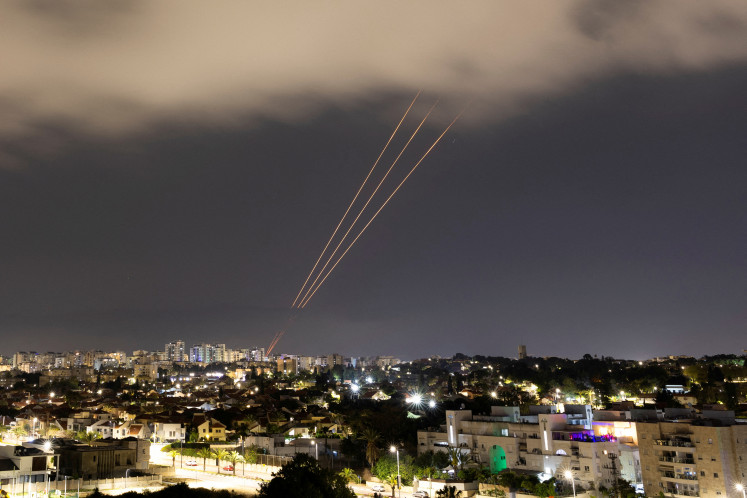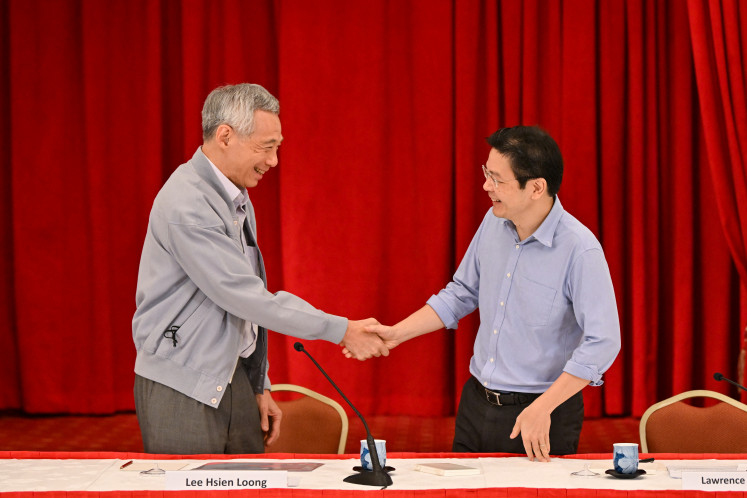Hello convenience, goodbye lines: The future of flying almost lands in Asia
Can you imagine how much smoother your journey to the airport would be if you could drop your bags near your home and have them delivered straight to your hotel?
Change Size
 Nothing kills a holiday mood faster than delays and airport lines, so imagine how nice it would be to walk straight through to your departure gate without ever again having to show your passport or wait in line. (Shutterstock/File)
Nothing kills a holiday mood faster than delays and airport lines, so imagine how nice it would be to walk straight through to your departure gate without ever again having to show your passport or wait in line. (Shutterstock/File)
N
othing kills a holiday mood faster than delays and airport lines, so imagine how nice it would be to walk straight through to your departure gate without ever again having to show your passport or wait in line. Can you imagine how much smoother your journey to the airport would be if you could drop your bags near your home and have them delivered straight to your hotel?
For decades it’s been the retail industry that has grabbed headlines for ingenious inventions to improve customer experience. Recent examples include Amazon Go stores that use computer vision, sensor fusion and deep learning to detect when products are taken from and returned to the shelves to eliminate check-out and lines from grocery shopping. There are also drone delivery and even "live" mirrors that suggest matching items as the customer enters the dressing room.
By comparison, airline and airport innovation has had to develop at a slower pace due to security considerations, new regulations and the challenge of scale. But all that looks set to change as the rapidly growing passenger numbers create a more urgent need to address capacity issues.
Building new runways and terminals alone isn’t a sustainable solution, nor one that’s always available due to space constraints. Instead, the answer lies in adopting new technologies to change how people fly and move around airports.
Goodbye lines
With millions more passengers coming through airports, there’s a big need to cut down on lines and passenger waiting time to keep people moving. While lines aren’t a big issue in Singapore’s Changi Airport – with the airport ranking best-in-class for traveler experiences – we are all too familiar with arriving in or departing from airports that have hour-long lines, for example for immigration or security checks.
Biometric scans will have a major role to play in this. Indeed, a recent trial by Lufthansa at Los Angeles International Airport succeeded in boarding 350 passengers onto an A380 in 20 minutes by using self-boarding gates with cameras to take passengers’ photos. Travel technology company Amadeus worked with US Customs to ensure that this could be done in real-time. Biometric boarding is now being trialed by several airlines and airports across the world, hinting that it’s likely to soon become commonplace.
Numerous airports in Asia already use some form of biometric scanning to speed up passenger processing. For example, the extensive use of biometric technologies at Changi Airport’s new Terminal 4. In the near-future it is likely that this kind of technology will to be integrated across all touchpoints, from check-in and bag drop, to immigration, airside security and the boarding gate, making physical tickets, passports and long queues things of the past, as well as enhancing security.
The holy grail of this, in terms of passenger convenience, is single token journeys, where passengers will be able to use one "key"– for example their iris – to pass through all checkpoints.
Hello, baggage-free travel
Another innovation set to greatly improve passenger experience is the advent of luggage-free flying – whereby the airline or airport carries the passenger’s bags door-to-door across the entire journey. This is made possible by cloud technology and not only provides a solution to the age-old traveler problem of having to haul heavy luggage to the airport, or around a city after hotel check-out, but is also a way for airports to minimize the space needed on-site for bag check.
Companies such as Off Airport Check In Solutions (OACIS) are among the pioneers of this new innovation in baggage processing by using off-site ‘pop-up’ check-in desks to process passengers and baggage at key locations outside the airport, including at cruise ship terminals, sporting events, and hotels.
Robot helpers and the cloud
Imagine being escorted to your gate by a robot, instead of a human. While this might seem like something out of the Bladerunner movie, this is likely to happen in our lifetime too.
As we see more airports turn to automated and self-serve kiosks to improve traveler experience and speed up check-in processes – for example the fully mobile check-in terminals in Hong Kong International Airport that allow passengers to check in remotely from a variety of locations – we’re also seeing them turn to robotics for customer service too.
While machines won’t replace human staff any time soon, many airports and airlines around the world are piloting how robotics can be used to speed up check-in and provide passengers with information to help them move through the airport.
KLM is one of the airlines testing this in the US with Care-E, a self-driving trolley designed to cut crowding and improve passenger experience by scanning their boarding pass and carrying up to 85 pounds of luggage; a service that may be particularly beneficial for assisting the elderly or less mobile travelers. Thanks to AI technology, Care-E will even be able to access real-time data to redirect passengers if their gate changes.
Rates of adoption will vary from country to country based on local labor costs and attitudes, but it may not be long before you are being escorted to your gate by a friendly robotic helper.
Drama-free delays
While technology can’t promise to put an end to delays entirely, it can be used to make them less painful for passengers.
Wouldn’t you be less inconvenienced if you could pass the time with your favorite cocktail in the airport lounge, or in the comfort of your own home, rather than stuck waiting at the departure gate, for example?
Airlines and airports are moving towards more advanced notification systems that will not only alert passengers ahead of delays, and even before they’ve arrived at the terminal but, in the future, could also be fully integrated with a passenger’s onward travel itinerary as well, to ensure that transport connections, hotels and activities are all alerted and re-arranged without the traveler having to worry.
An Asia-first future
Ultimately, there has never been a bigger, or more pressing, incentive for airports and airlines to invest in new technologies to solve capacity constraints. And, with predictions that Asia will be the center of passenger growth in the next decade – with routes to, from and within Asia forecast to see an extra 1.8 billion annual passengers by 2035 - we can expect Asia to lead the way in these innovations, too.
Infrastructure constraints may be the primary motivating factor for Asia’s airlines and airports to innovate, but travelers stand to be the biggest winners, with improved convenience, speed and service.
***
Sarah Samuel is head of airport IT Asia-Pacific for Amadeus.






